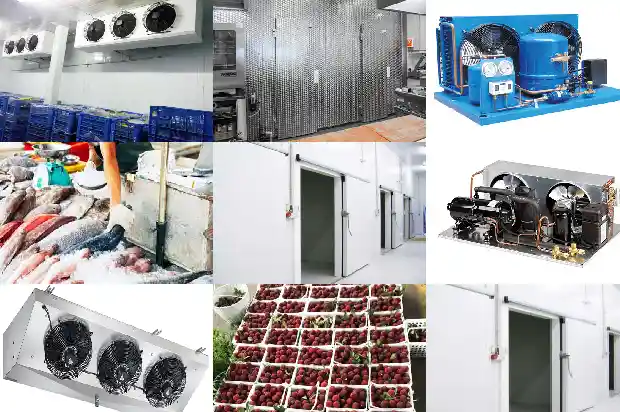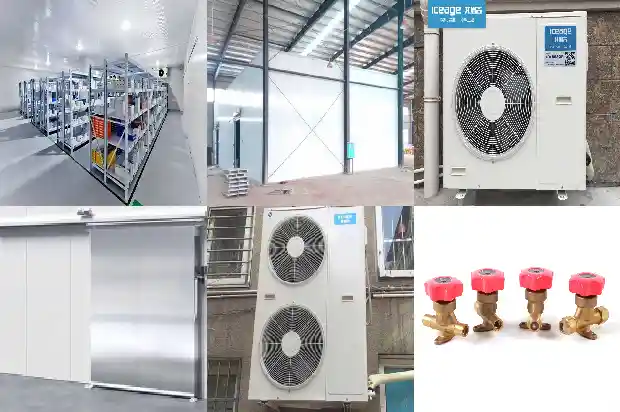Composition, Classification and Selection of Cooling Towers
2025-03-17
A cooling tower is a device that cools water by using the contact (direct or indirect) between air and water. It uses water as a circulating coolant, absorbs heat from a system and discharges it into the atmosphere, thereby reducing the temperature inside the tower and creating a device where the cooling water can be recycled.
Structural Components and Functions of a Cooling Tower:
- Support and Tower Body: Provide external support.
- Filling: Provide the largest possible heat - exchange area for water and air.
- Cooling Water Tank: Located at the bottom of the cooling tower to receive cooling water.
- Water Collector: Recover the water droplets carried away by the air flow.
- Air Inlet: The air entrance of the cooling tower.
- Louver: Even out the incoming air flow and retain the moisture inside the tower.
Principle of the Cooling Tower - Components:
- Water Spraying Device: Spray out the cooling water.
- Fan: Supply air into the cooling tower.
- Axial - flow fans are used for induced - draft cooling towers.
- Axial - flow/centrifugal fans are used for forced - draft cooling towers.
Types of Cooling Towers: Natural - draft cooling towers, natural ventilation, mechanical ventilation cooling towers.
Parameters to be Measured for Cooling Tower Selection: Wet - bulb air temperature, dry - bulb air temperature, cooling tower inlet water temperature, cooling tower outlet water temperature, exhaust temperature, pump and motor operating parameters, water flow rate, air velocity;
Operating Parameters: Cooling water temperature difference, approach, efficiency, cooling tower capacity, makeup water volume, cooling water flow rate, selection, design issues in cooling tower selection.
Operating Parameters: Cooling water temperature difference, approach, efficiency, cooling tower capacity, makeup water volume, cooling water flow rate, selection, design issues in cooling tower selection.
- Cooling Water Temperature Difference: Inlet temperature - Outlet temperature. A large temperature difference = high performance.
- Approach: The difference between the cooling tower outlet water temperature and the inlet air wet - bulb temperature. A small approach = high performance.
- Efficiency:
- Cooling Tower Capacity: The unit of cooling tower capacity is "kcal per hour" or "refrigeration tons".
Cooling tower capacity = Mass flow rate of cooling water × Specific heat capacity of water × Temperature difference.
Large capacity = high performance. - Calculation of Makeup Water Volume
- Evaporation Loss Water Volume (E):
E = Q/600 = (T1 - T2)×L/600
E represents the evaporation water volume (kg/h);
Q represents the heat load (Kcal/h);
600 represents the latent heat of vaporization of water (Kcal/h);
T1 represents the inlet water temperature (℃); T2 represents the outlet water temperature (℃);
L represents the circulating water volume (kg/h). - Drift Loss Water Volume (C): The drift loss of the cooling tower is determined by factors such as the cooling tower design type and wind speed. Under normal circumstances, its value is approximately 0.1 - 0.2% of the circulating water volume.
- Regular Drainage Loss Water Volume (D): The regular drainage loss water volume must be determined according to factors such as water quality or the solid concentration in the water. Generally, it is about 0.3% of the circulating water volume.
M = E + C + D
Evaporation loss water volume (E), drift loss water volume (C), regular drainage loss water volume (D).
When the cooling tower is used for air - conditioning, the designed temperature difference is 5℃. At this time, the makeup water volume required by the cooling tower is approximately 2% of the circulating water volume.
- Evaporation Loss Water Volume (E):
- Cooling Water Flow Rate
K·Q = C·M·ΔT
K: Estimation coefficient
Q: Maximum refrigeration capacity of the unit
C: Specific heat capacity of water
ΔT: Temperature difference between supply and return water
M: Mass flow rate of cooling water. It is 1.3 times the maximum refrigeration capacity of the compression - type refrigeration unit; 2.
5 times the refrigeration capacity of the absorption - type refrigeration unit (lithium bromide).
- Example of Selection: For a project using a PFS640.2XE unit, calculate the water flow rate and makeup water volume of the cooling tower.
Makeup water volume m = M·2% = 140kg/s·2% = 2.8kg/s - Common Design Issues in Cooling Tower Selection
- What are the determining factors of cooling tower energy consumption?
Answer: Fan power, cooling water flow rate, cooling water makeup water volume? - For the temperature conditions of the cooling tower, at what temperature is the efficiency and economy good?
Answer: The inlet water temperature of the cooling tower varies according to different usage situations. For example, the outlet water temperature of the condenser of a central air - conditioner is generally 30 - 40℃, and the outlet water temperature of the cooling tower is generally 30℃. The ideal cooling temperature (return water temperature) of the cooling tower is best 2 - 3℃ higher than the wet - bulb temperature. This value is called the "approach". The smaller the approach, the better the cooling effect and the more economical the cooling tower. - Comparison between Open - type and Closed - type
Open - type: The initial investment is relatively low, but the operating costs are high (water consumption, power consumption).
Closed - type: This equipment is suitable for use in harsh environments such as arid, water - scarce, and sand - dust - storm - prone areas. It can cool many media such as water, oils, alcohols, quenching fluids, brines, and chemical liquids. The media have no loss and their components are stable. Low energy consumption.
Disadvantage: The cost of a closed - type cooling tower is three times that of an open - type tower.
- What are the determining factors of cooling tower energy consumption?
Related Articles
- Analysis of the Composition, Control and Operation Process of Cold Storage System
- Composition and Common Faults of Screw Refrigeration Compressors
- Analysis of Classification, Differences, Advantages and Disadvantages of Cold Storage Refrigeration Compressors
- Wiring Methods, Faults and Classifications of Fan Coil Units, All Here~~
- Introduction to Five Classification Functions of Cold Storage Installation for Refrigeration
- Classification of the Properties of Refrigeration Systems
- Installation Precautions and Accessory Selection for Cold Storage Unit
- Screw Compressor Units: Principles, Design and Selection - Essential Guide for Refrigeration Beginners
- Selection of Bypass Control Valves for Air - conditioning Water Systems
- Reference Points for Selection of Screw - type Chillers
- Selection and Installation of Thermal Expansion Valves
- Function and Selection of Buffer Tanks
- Operation and Maintenance Process of Cooling Towers
- HVAC Design | Basics of Cooling Towers
- Cleaning Procedures and Methods for Cooling Towers and Heat Exchangers
- Basic Knowledge of Cooling Towers
- 【HVAC Design Summary】 - Free Cooling with Cooling Towers
- How to Choose between Open - type and Closed - type Cooling Towers?
